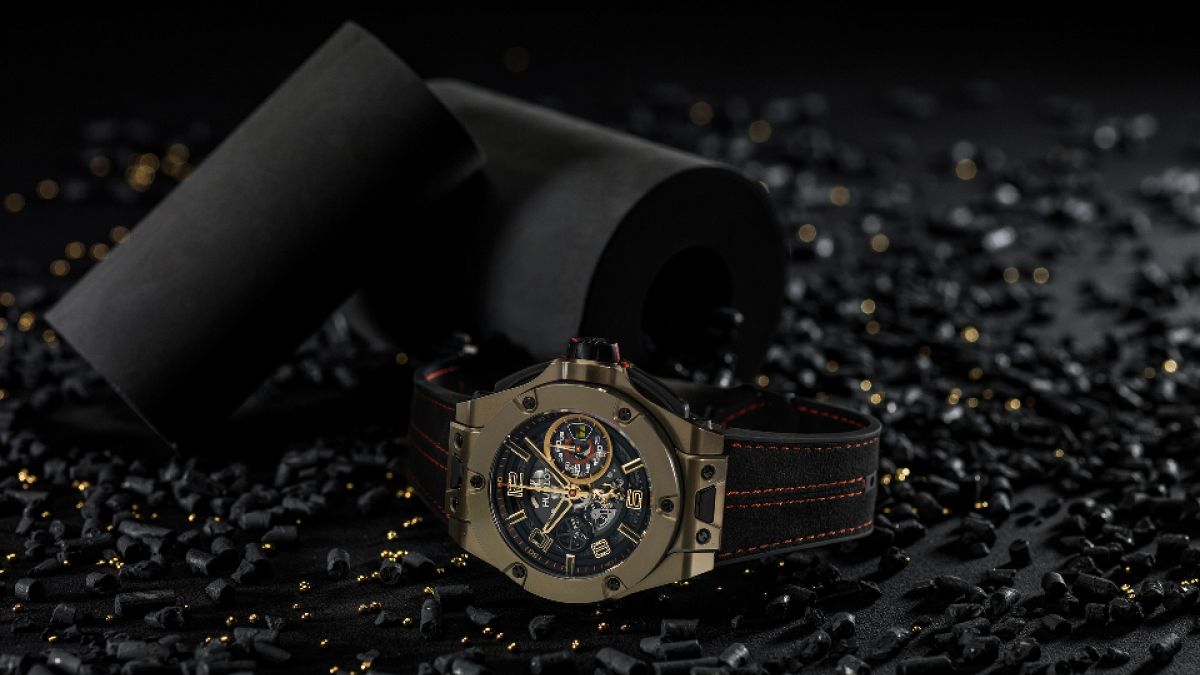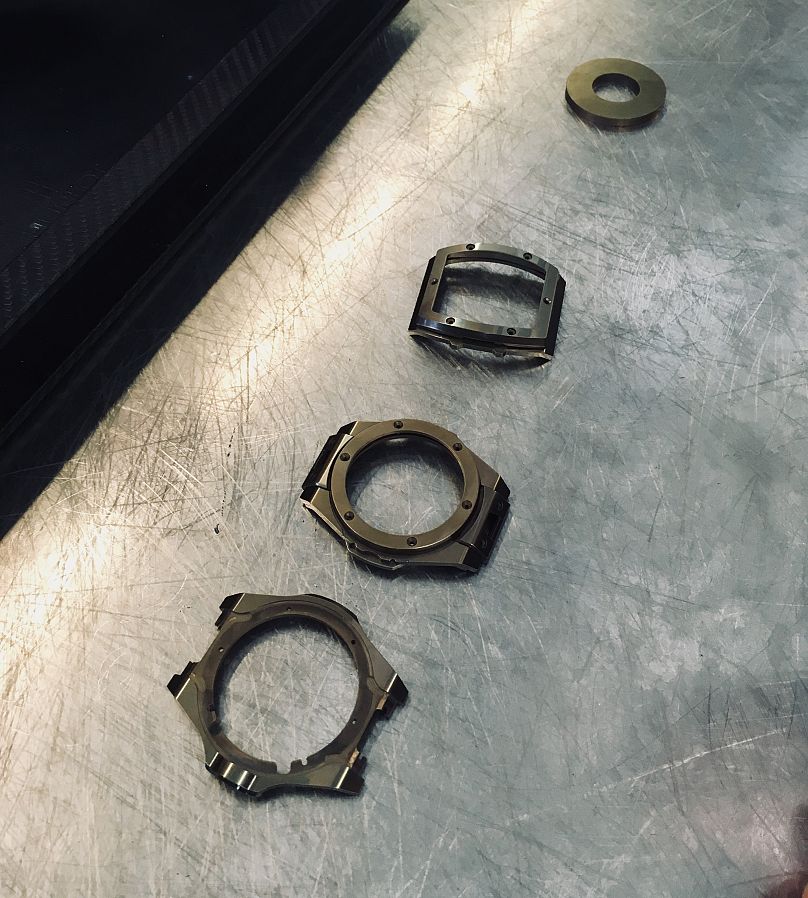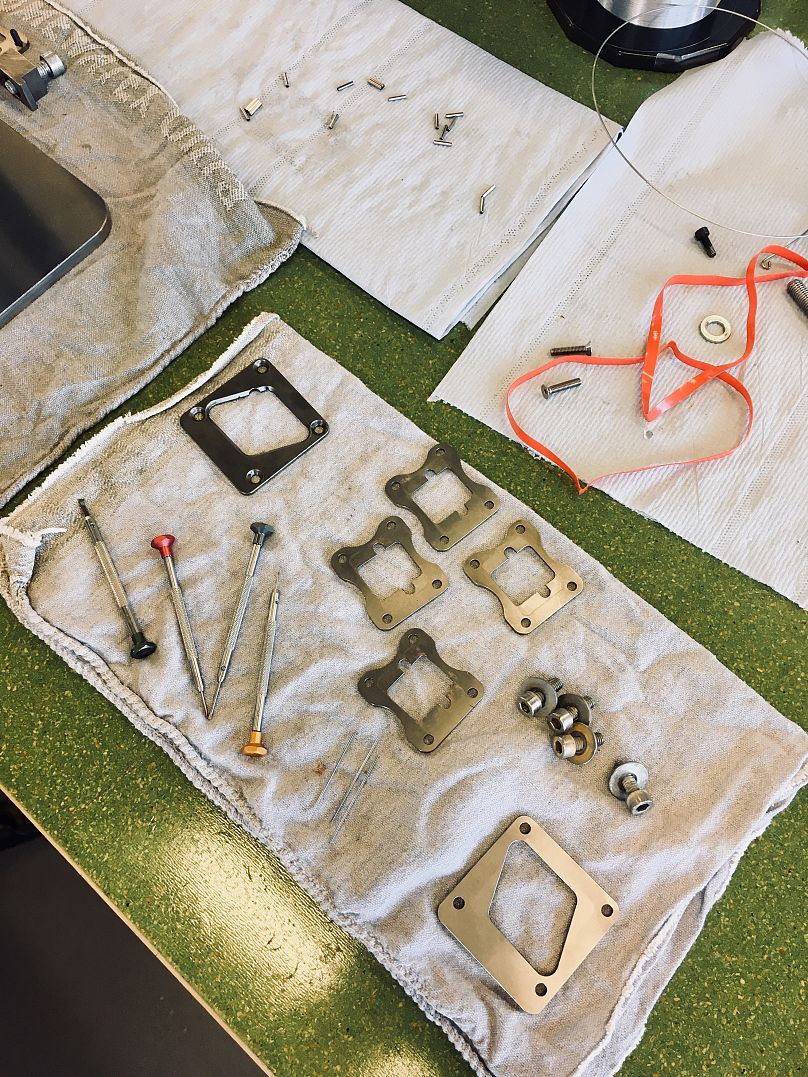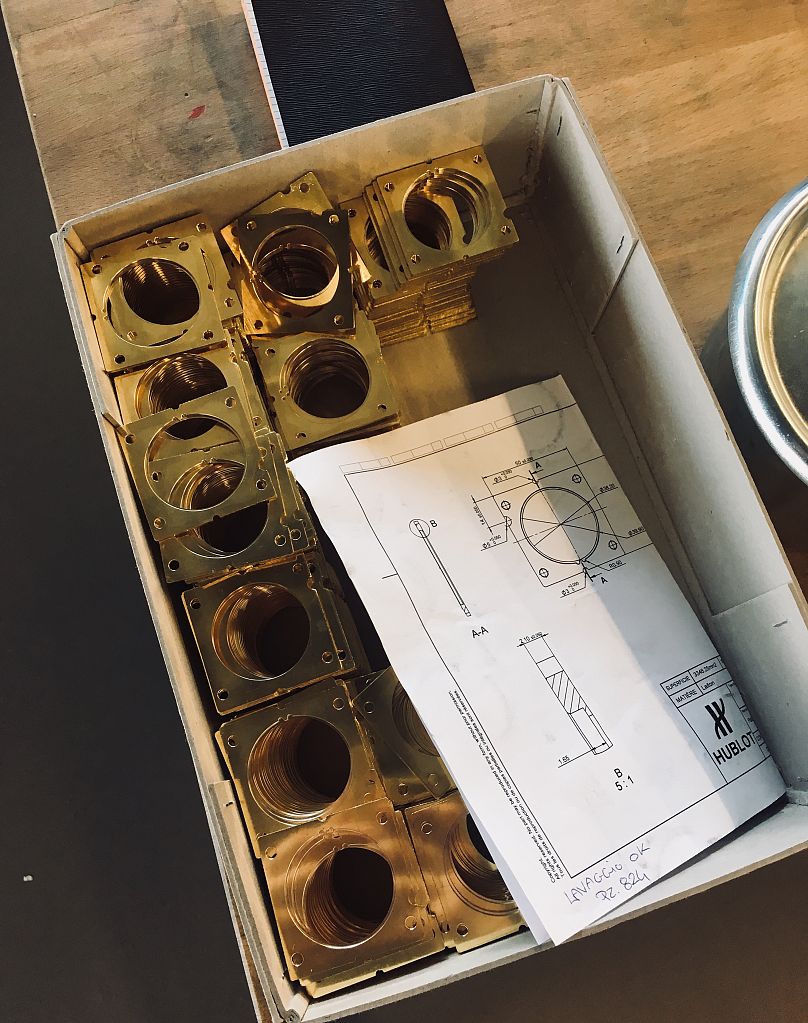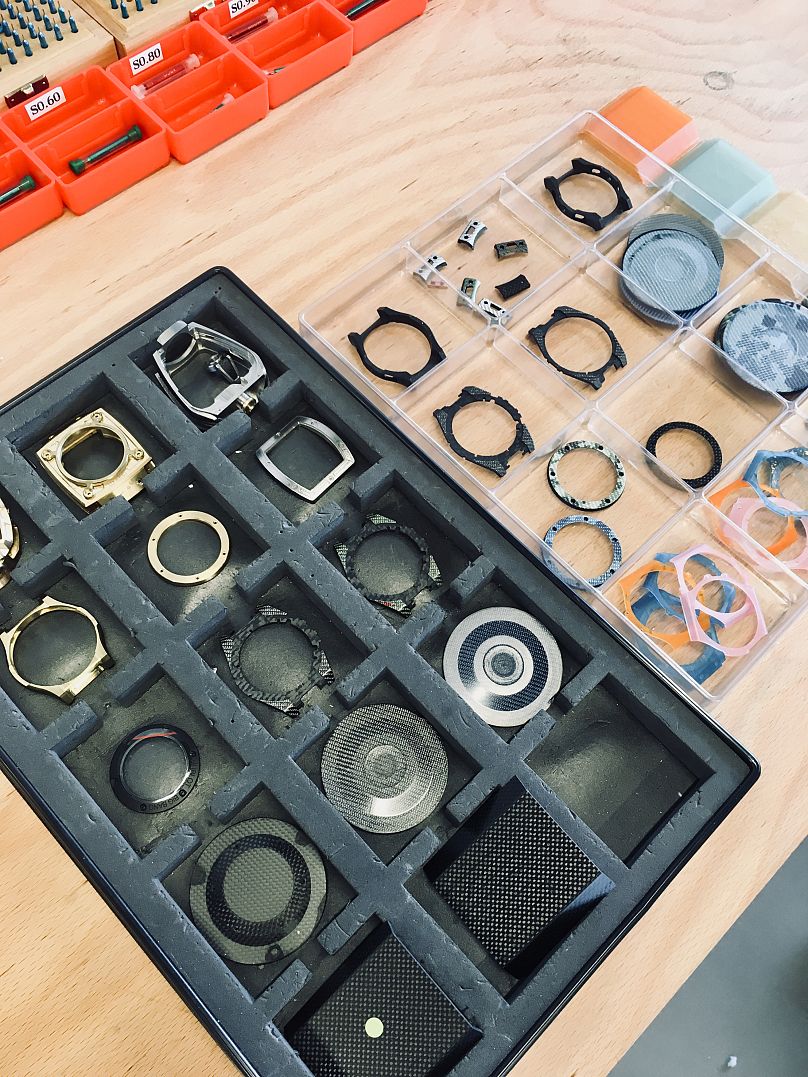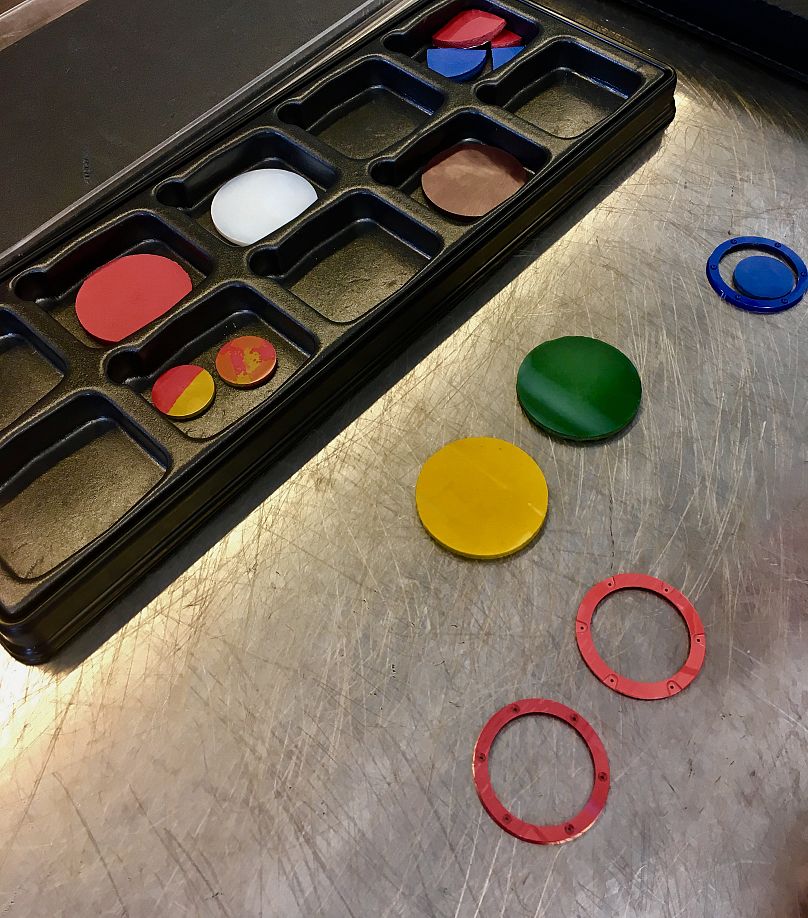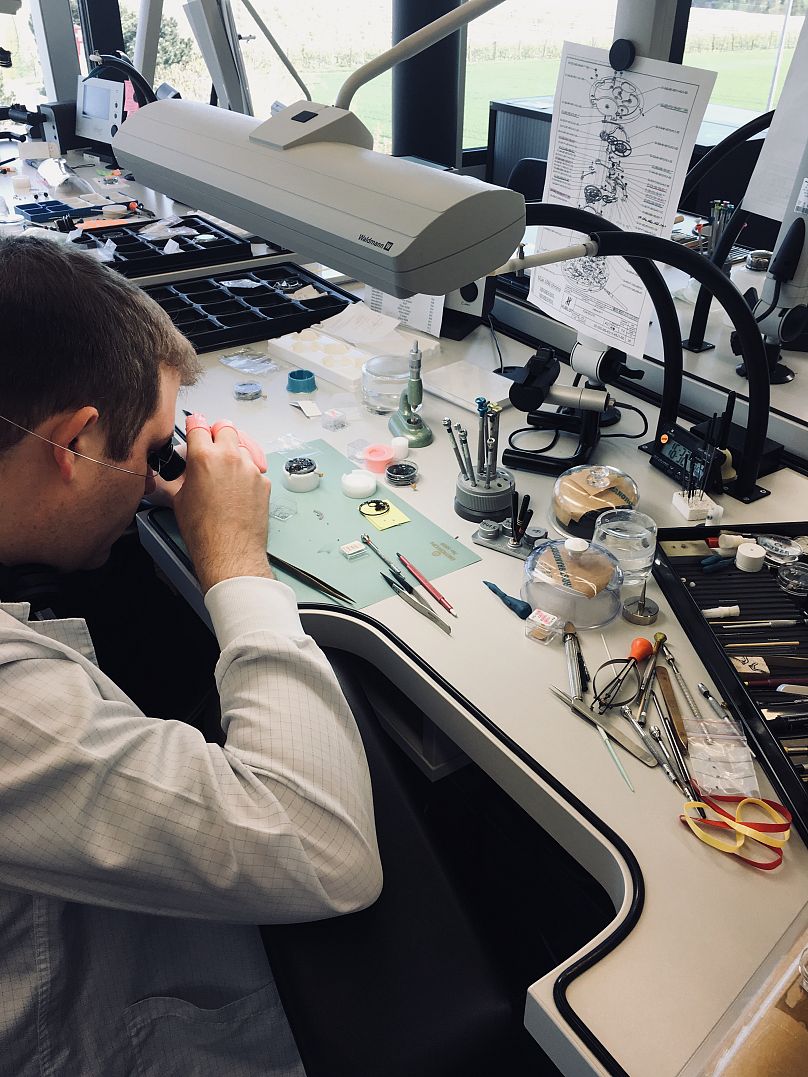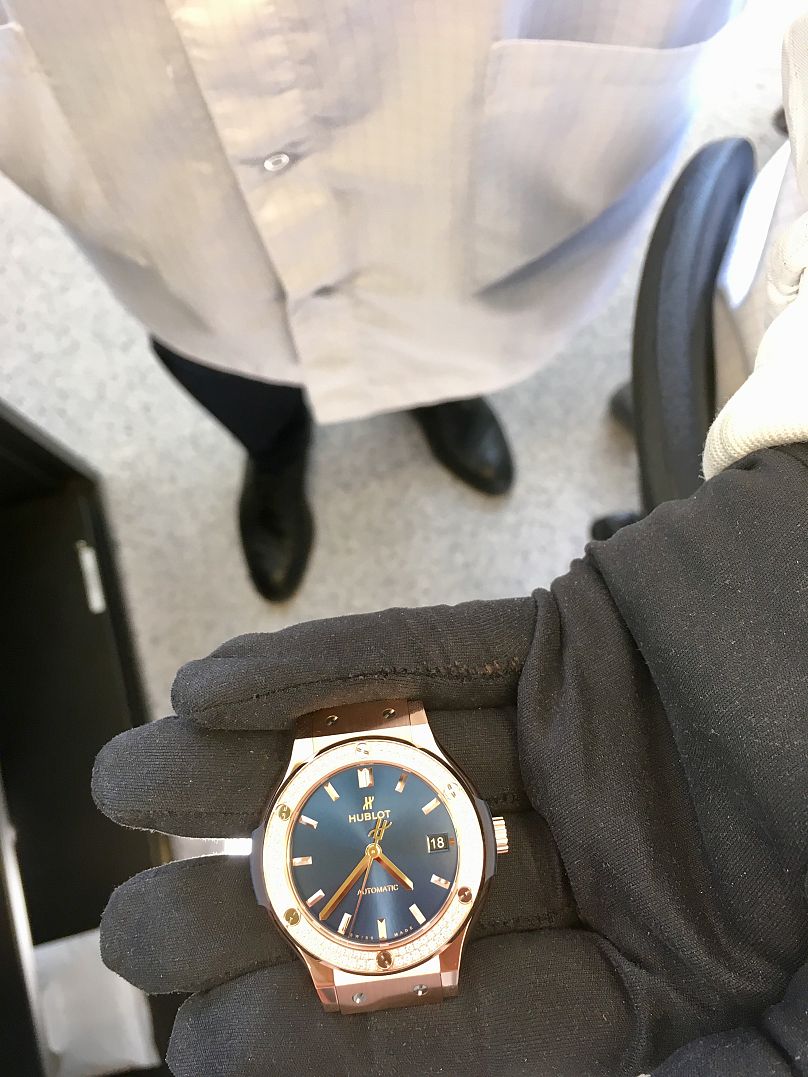A private visit of Hublot’s manufacture in Nyon, Switzerland
There is a certain terror and discomfort that comes with seeing, for the first time, a gold luxury watch worth around 30 thousands euros, being scratched down vigorously against a metal surface. Luca Bianco, Hublot’s Materials Science Engineer, finds my stupor quite amusing, since he is doing this demonstration on a weekly basis for guests visiting the watch manufacture.
“It took us two years to develop our ‘Magic Gold’ material. This is the first ever gold that doesn’t scratch.” he explains whilst torturing the Big Bang Unico Full Magic Gold against the table. “We own the patent which was developed, thanks to our fundings, by Ecole Polytechnique in Lausanne. The manufacturing and components haven’t changed since 2012.”
The making of Hublot’s Magic Gold
My tour of the manufacture starts with the machinery floor where 50 per cent of preliminary work is done. “This machine is completely bespoke to us” explains professional watchmaker Chinh Doan, my tour guide. He is pointing to a high-tech tank called the ‘Ultrasound machine’ where ‘magic gold’ is cut into watch cases by diamonds (the only material harder than this) . “We can only make one Magic Gold watch per day from start to finish. It means we can only produce 365 pieces per year.” he explains.
To make this unusual and highly resistant material, Hublot engineers mix 75 per cent of 18-karat gold with boron carbide - an extremely hard ceramic used in tank armor and bulletproof vest. The boron carbide powder is solidified into a sponge-like tube in which the gold can penetrate when heated. “Are they not afraid to give out this manufacturing secret?” I ask. “In watchmaking, the most important is to be the first and to innovate. Any brand doing this now, would just be free advertising for us”, Bianco says with a smile.
The ‘Art of Fusion’: the core of Hublot’s work
As soon as you enter Hublot’s manufacture you understand that inventing new materials is the DNA of the brand. Being the first to marry solid gold with black rubber in the early eighties, they are constantly evolving and currently experimenting a combination of linen textile with gold, a blend which is “completely unique each time”.
Their latest achievement is coloured ceramics. “When Zircon (ceramics) is heated to more than 2000 degrees, the colour fades away. A red will become brown or orange. ” explains Bianco. “We found a way to heat it a lower temperature in order to keep the three primary colours pigments very bright, which means we can make any colour combination” he says.
Hublot’s ties with the football world: Chelsea, Juventus and Benfica
“This is the Brazilian flag, you can make bespoke watches for football fans” I joke whilst playing with the blue, green and yellow coloured sample chips. An idea that resonates strongly with the brand’s positioning. Indeed, Hublot is the official timekeeper of the next 2018 FIFA World Cup (referees will be wearing Hublot’s watch), has multiple partnerships with prominent clubs and is beloved by international football players including Pelé who is one of the brand’s prestigious ambassadors.
The visit ends on the top floor of the manufacture in the complications atelier with a view overlooking a sunny apple field. The atmosphere here is particularly quiet and studious, as this is where the most intricate and difficult mechanisms are fully handmade under microscopes. A unique savoir-faire that we cannot really see and that is celebrated throughout the world, just like something truly magical.
Discover more about Hublot on https://www.hublot.com
